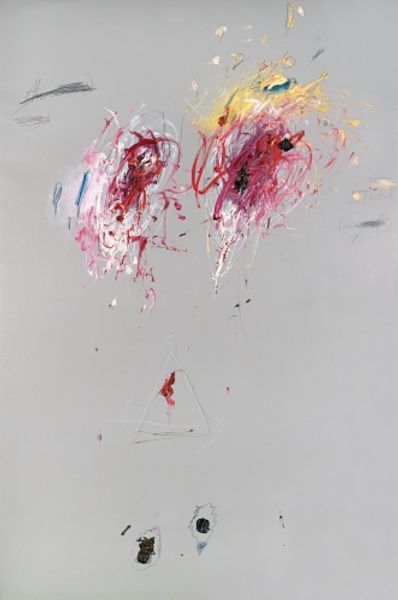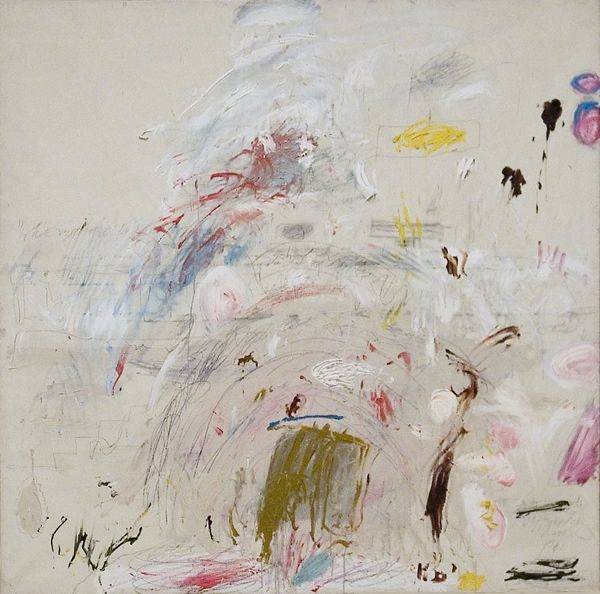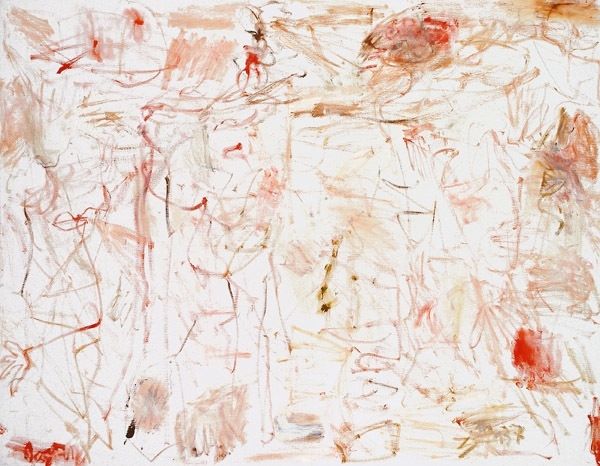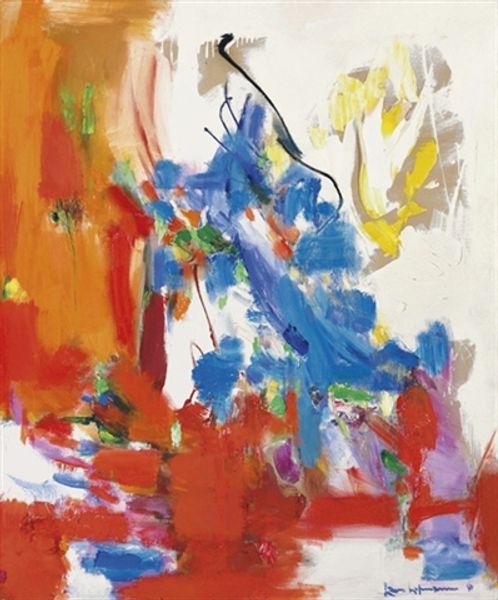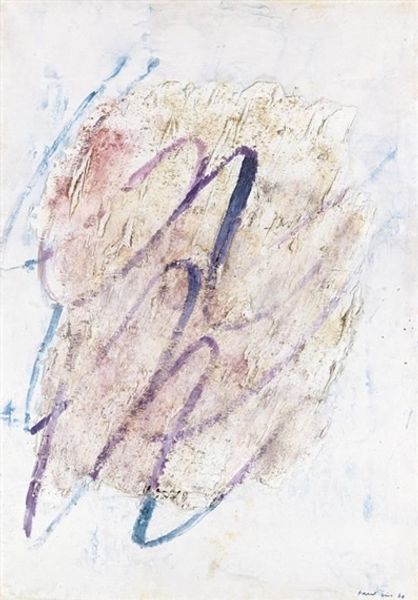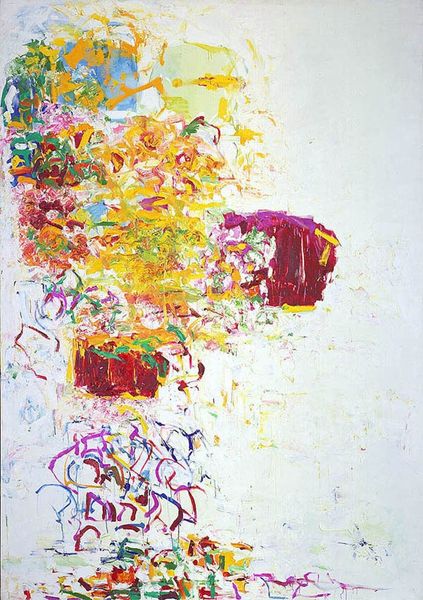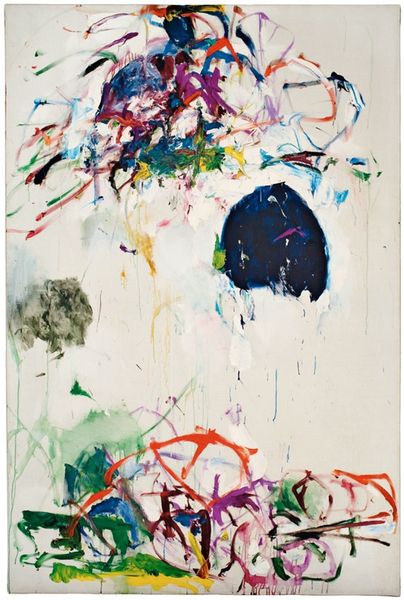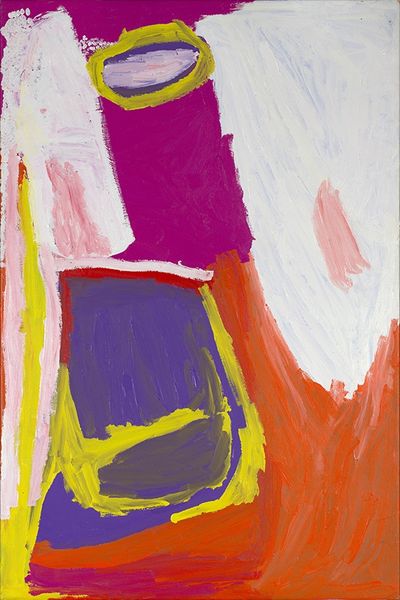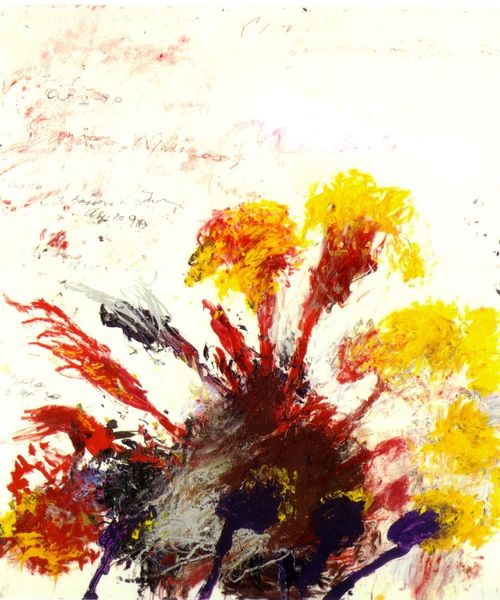
#
black-mountain-college
Dimensions: sheet: 99.7 × 69.22 cm (39 1/4 × 27 1/4 in.)
Copyright: National Gallery of Art: CC0 1.0
Editor: Here we have Cy Twombly's "Nike," created in 1981 using oil paint, pencil, and colored pencil. It's predominantly a swirl of impasto, light pink and white hues, and quite abstract. I get a sense of frenetic energy, contained, but threatening to burst. What are your initial thoughts? Curator: Interesting choice of words! As a historian, my focus goes to Twombly's position within the art world of the 1980s. Abstract Expressionism had long been canonized, even commodified. Consider the bold title: "Nike," named for the Greek goddess of victory. Does it not seem ironic, in the context of the rise of consumer culture, that a classical ideal is paired with such a gestural, almost rebellious application of paint? Editor: I didn't even consider that! So, you’re suggesting that he's making a statement on commercialism by referencing classical imagery? Curator: Precisely. Think about how museums, galleries, and collectors were shaping the narrative of art history at the time. This work becomes a political gesture in that context. Its apparent spontaneity masks a deeper engagement with the institution of art itself. Editor: So, the scribbled lines and almost childlike quality of the work might be a deliberate rejection of established artistic norms? Curator: It could certainly be viewed that way. Twombly invites us to question the very definitions of skill, beauty, and artistic value as they were dictated by the dominant cultural institutions. He challenges the prevailing aesthetic hierarchy of the time. What does this tell you about the function of painting and the marketplace? Editor: This conversation has totally reshaped my view. I was focused on the formal elements, but now I see "Nike" as a commentary on the art world itself. Thanks! Curator: Indeed, examining the political and social implications enriches our understanding, leading to more complex appreciation.
Comments
No comments
Be the first to comment and join the conversation on the ultimate creative platform.

